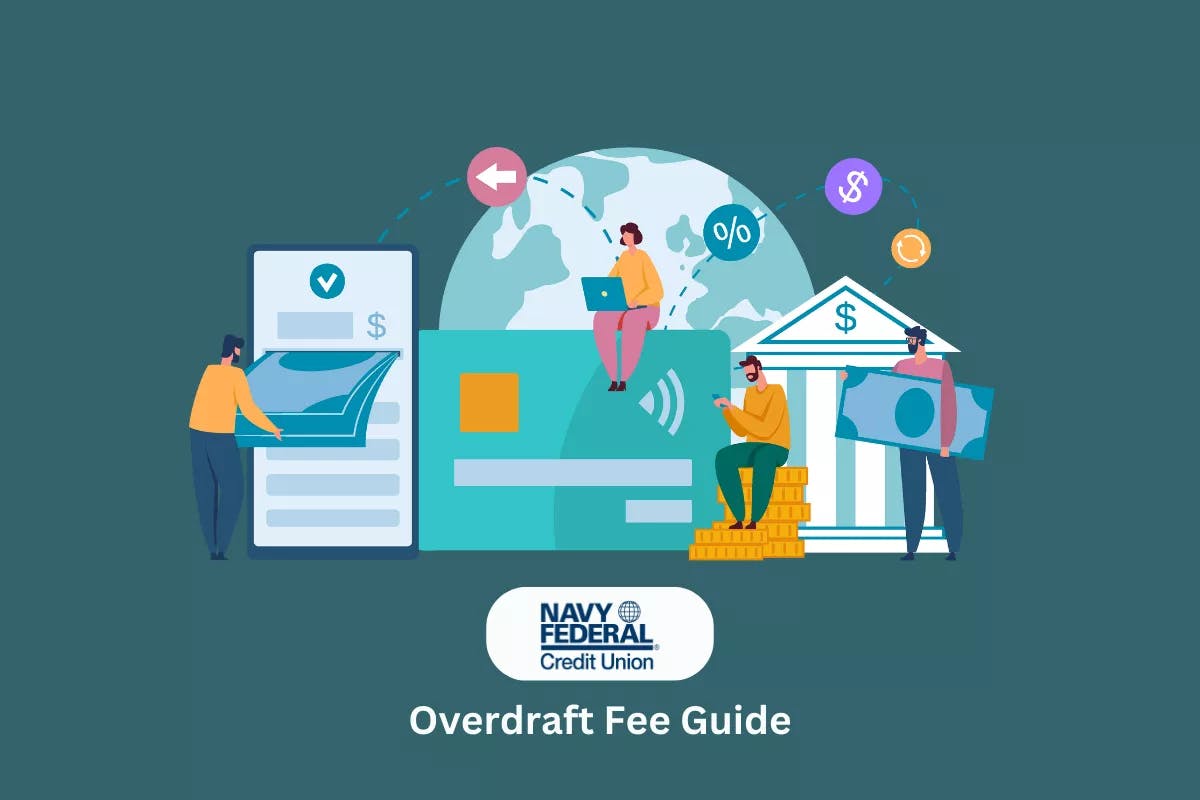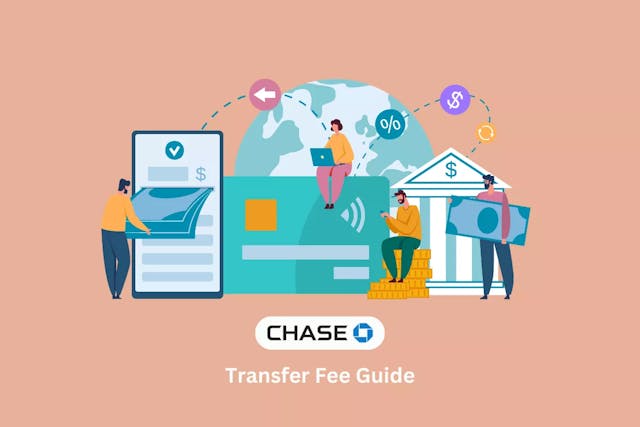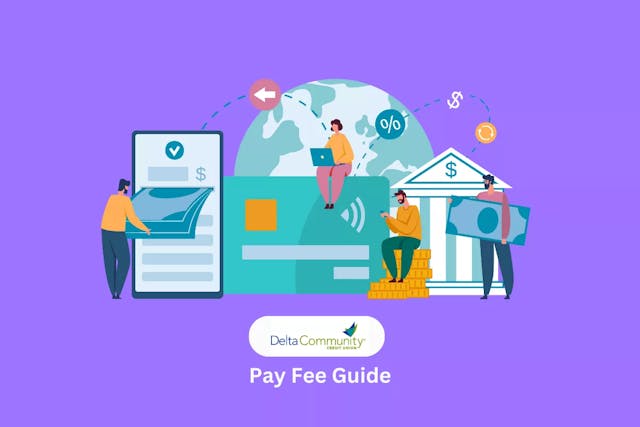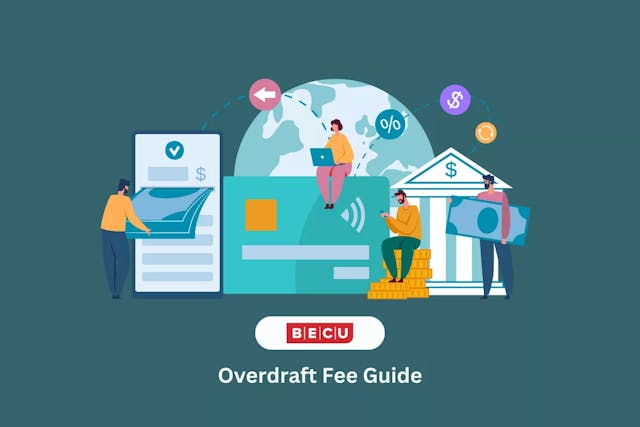Overdraft fees can make a bad financial situation worse. So it’s best to learn about what kind of overdraft coverage you have and how to avoid overdraft fees.
The Navy Federal Credit Union (NFCU) has three types of Overdraft Coverage:
- Overdraft Savings Transfer NFCU automatically transfers funds from a connected savings account. This type of transfer does not charge a fee.
- Optional Overdraft Protection Service (OOPS) An opt-in service that allows NFCU to cover various transaction types when you do not have enough funds in your account to cover a purchase. If you opt into OOPS and overdraw your account, NFCU may charge you an overdraft protection fee.
- Checking Line of Credit (CLOC)
NFCU applies your overdraft transaction to a linked line of credit, which requires credit approval. In this situation, NFCU can issue you an overdraft fee, but it may cost less than an OOPS fee.
If you opt into OOPS, you have the option of allowing NFCU to cover:
- Checks, ACH transactions, automatic bill payments, transactions made using your checking account number
- ATM transactions and debit purchases
- All of the above
💡 Note: NFCU is not obligated to cover any transactions that overdraft your account, regardless of transaction type or overdraft protection status. The decision is ultimately at the credit union’s discretion.
How Much Does an Overdraft Fee Cost at Navy Federal Credit Union?
The cost of an overdraft fee at NFCU varies depending on which services you are opted into.
If you overdraw your account, NFCU will first attempt to pull funds via Overdraft Savings Transfer (free) or Checking Line of Credit (varies, may cost less than a transfer under OOPS).
If you don’t have a connected savings account or line of credit, NFCU will resort to OOPS if you have opted in. An overdraft fee under OOPS costs $20 per transfer.
💡 Note: If you overdraw your account by $5 or less, NFCU will not issue you an overdraft fee. You also have up to 30 days to bring your account to a positive balance before you get charged with an OOPS overdraft fee.
How Can I Apply for Navy Federal Credit Union Overdraft Coverage?
To apply for any of the three types of overdraft coverage of NFCU, you just need to call 1-888-842-6328.
Can You Overdraft the Navy Federal Debit Card
Yes, you can overdraft the Navy Federal Debit card if you’ve opted into Optional Overdraft Protection Service (OOPS) or if you applied for a Checking Line of Credit (CLOC).
If you haven’t opted for any overdraft coverage service, then you can’t overdraft the Navy Federal Debit Card. In this case, the transaction will simply be declined and you may be charged with a non-sufficient funds (NSF) fee instead ($29.00).
Special Considerations
To qualify for OOPS, you must meet the following requirements:
- Be at least 18 years old
- Be an NFCU member for at least 90 days
- Have no delinquencies or legal orders against your NFCU accounts
Navy Federal Credit Union can still charge you an overdraft protection fee even if you haven’t opted into OOPS. This can occur if the credit union authorizes a transaction in advance or places a hold on your account for an amount lower than the actual transaction amount.
Overdraft protection can help if you’d like peace of mind knowing that your transactions can be covered even if you don’t have enough funds in your account. However, overdraft protection is not mandatory; in fact, you could save a ton of money by not opting in.
Before opting in, carefully consider whether OOPS is the right decision for you. One option to cut down on potential overdraft charges is to only opt into OOPS coverage for checks, ACH transactions, automatic bill payments, and transactions made using your checking account number, and not opt-in for ATM transactions and debit purchases.
Learn more about what you should know before opting into overdraft protection.
How to Avoid an Overdraft Fee
Here are some actions that you can take to avoid overdraft fees:
- Keep an eye on the balances and charges of your primary and linked accounts.
- Sign up for low-balance notifications.
- Carefully consider whether you should opt into overdraft protection.
Learn more about what to do if you’re about to overdraw your account.
How to Get an Overdraft Fee Refund
Even if all precautionary steps have been taken, overdraft fees still happen. Fortunately, there are ways to reverse the penalties. Here are some steps that you can take to optimize your chances of getting a refund when you begin the negotiation process with your financial institution.
1. Prepare your information
Name, address, bank account number, and the fees that you’d like to negotiate.
2. Introduce yourself
“Hello. My name is , and I recently received an overdraft fee on my account. I’m contacting you to see if you would be willing to refund this fee.”
3. Prepare your points of leverage
Have you been financially affected by COVID-19? Is this overdraft a rare occurrence? Are you a loyal customer who has banked with the institution for an extended period of time? Do you have multiple accounts with the bank? Do you make regular deposits?
4. Be patient, persistent, and prepared not to get a refund every time
The representative that you’re speaking with likely didn’t write the rules, so you should try to be as kind and considerate as possible throughout the process. You also shouldn’t hesitate to press the issue if you initially hear “no” — your points of leverage come in handy here. Success can depend on the representative that you’re working with. If you’re having trouble with one agent, try asking to speak with a branch manager or calling back later to speak with someone new. Unfortunately, you might also lose some negotiations. Try not to get discouraged. Instead, focus on what you can do going forward to avoid overdraft fees.
Learn more about how to get an overdraft fee refund.
Find Navy Federal Credit Union’s overdraft guide here and the full fee schedule here.



